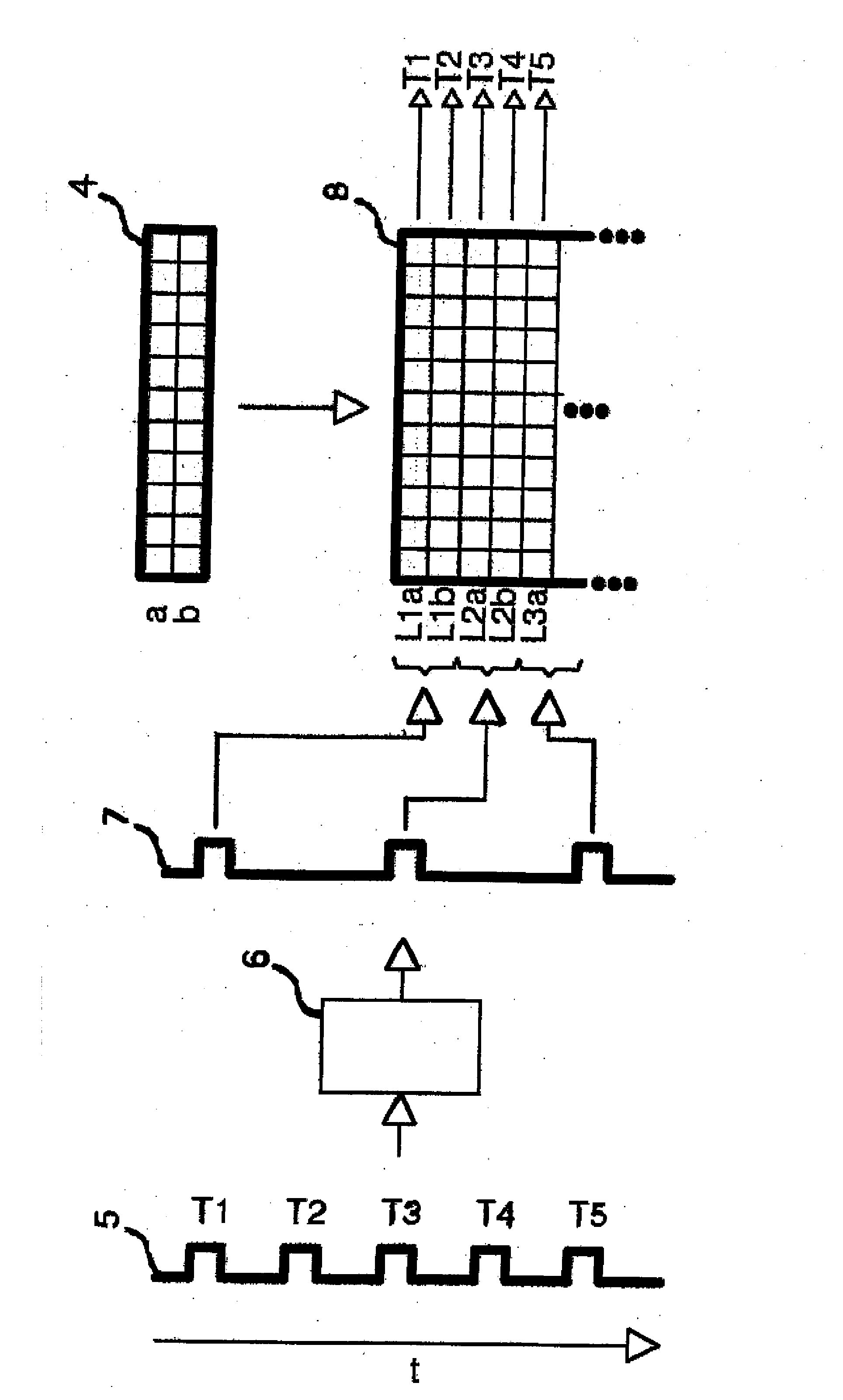Controller for an Electronic Line-Scan Camera
a technology of electronic linescan and controller, which is applied in the direction of instruments, television systems, material analysis, etc., can solve the problems of difficult arbitrary use of such electronic cameras, distortion could be generated, etc., and achieve the effects of increasing image capture rate, facilitating image information, and facilitating output faster
- Summary
- Abstract
- Description
- Claims
- Application Information
AI Technical Summary
Benefits of technology
Problems solved by technology
Method used
Image
Examples
Embodiment Construction
[0015]In the drawing, the signal flow for controlling an electronic camera is shown schematically. In the embodiment shown, for example, due to the motion of an object, external trigger signals T1, T2 . . . T5 following each other spatially are generated. These trigger signals can be, for example, feed-controlled, if the object to be scanned is moved and is located, for example, on an assembly line. An image line should be recorded at each of these external trigger signals 5. For uniformly moving objects, time-controlled trigger signals can also be used, which feature a time interval relative to each other. Usually, the trigger signals are generated continuously, so that a linear region of the object to be scanned is allocated to each trigger signal, with this region being adjacent to a directly adjacent linear region allocated to the previous trigger signal. Thus, the assembled image lines form the overall image of the object.
[0016]The image sensor 4 of the electronic camera is for...
PUM
 Login to View More
Login to View More Abstract
Description
Claims
Application Information
 Login to View More
Login to View More - R&D
- Intellectual Property
- Life Sciences
- Materials
- Tech Scout
- Unparalleled Data Quality
- Higher Quality Content
- 60% Fewer Hallucinations
Browse by: Latest US Patents, China's latest patents, Technical Efficacy Thesaurus, Application Domain, Technology Topic, Popular Technical Reports.
© 2025 PatSnap. All rights reserved.Legal|Privacy policy|Modern Slavery Act Transparency Statement|Sitemap|About US| Contact US: help@patsnap.com


